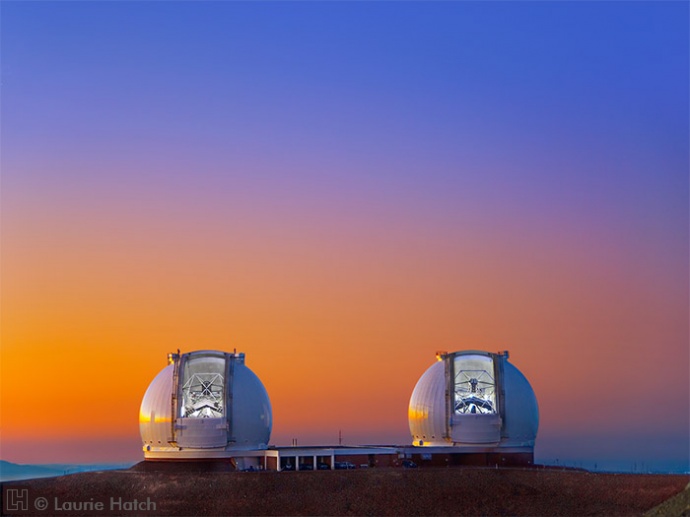Keck Observatory Helps in Discovery of Earth-Sized Exoplanet
By Wendy Osher
A team of researchers found the first Earth-sized planet outside the solar system with a rocky composition like that of Earth, according to information released today by the University of Hawaiʻi Institute for Astronomy.
The exoplanet, now known as Kepler-78b, is located 400 light-years from Earth in the constellation Cygnus, officials said.
It was discovered using data from NASA’s Kepler Space Telescope, and confirmed and characterized with the WM Keck Observatory located at Mauna Kea on Hawaiʻi Island.
The team of astronomers, led by Dr. Andrew Howard of the UHIfA, measured the mass of the planet using the 10-meter Keck 1 telescope, the announcement said.
Researchers say the data was key, because it is the first planet within a new class of short orbits, that is the size or mass of earth, in which both measurements were made.

The twin 10-meter telescopes of Keck Observatory. Laurie Hatch Photography (www.lauriehatch.com) Image courtesy UHIfA.
“When you have both the size and the mass of an object, you can calculate its density, and thereby determine what it is made of,” said Dr. Howard in a department issued press release.
Researchers say Kepler-78b has a radius that is about 1.2 times that of Earth; a mass that is about 1.7 times that of Earth; and a density that is the same as Earth, “suggesting that it is also made primarily of rock and iron.”
With a star living very close to the exoplanet, researchers say Kepler-78b is much too hot to support life.
The team also reportedly consisted of UH Mānoa graduate students Benjamin Fulton and Evan Sinukoff, as well as researchers from MIT, the University of California-Berkeley, Harvard, Yale, and University of California-Santa Cruz.
In addition to its management of observatories at Mauna Kea, the Institute for Astronomy also conducts research at observatories at Haleakalā on Maui.
According to the UHIfA announcement, the results of the study are being published in the journal Nature.










